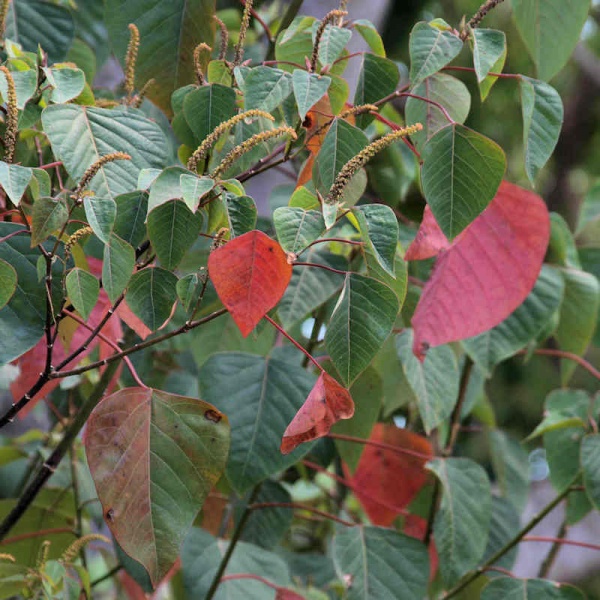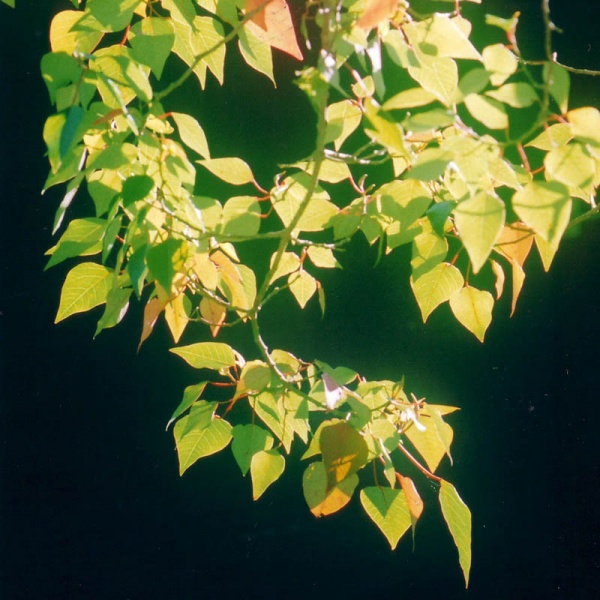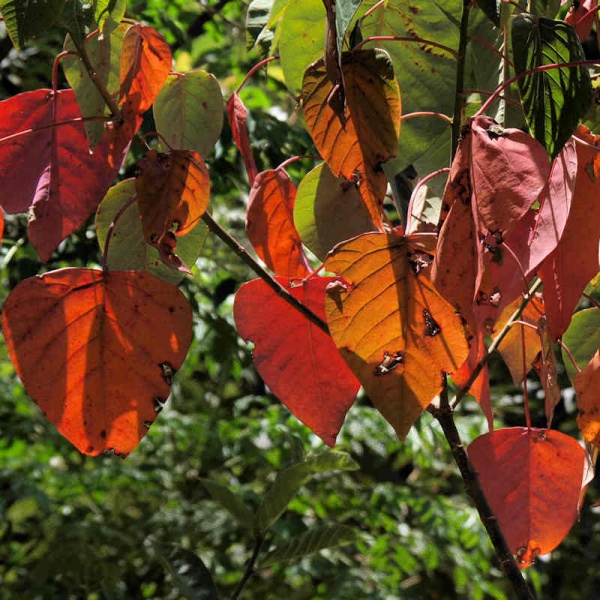Scientific Name: Homalanthus nutans (Omalanthus populifolius, Homalanthus populifolius)
-
Pronunciation:oh-mah-LAN-thus NEW-tans
-
Common Name:Native Poplar, Bleeding Heart




-
Derivation:Omalanthus populifolius, Homalanthus populifolius
-
Type:
-
Family:EUPHORBIACEAE
-
Flowers:Cream, spikes, September to December
-
Fruit:Bluish-white, purplish, 2-lobed capsule 6-9 mm lonjg
-
Vegetation Type:Rainforest margins
-
Species List:FI Podberscek, NNP Parkedge/Alex, NNP service road, BSDoonan, Fraser Island, Cranks Creek, Batianoff 87, NNS, Upper Yandina Creek, Boreen Point, TAFE, NNP Tanglewood, BHNR, Stratford Park
Cultural Notes
TAKE CARE! Some information about bush foods and medicines may be anecdotal. Correct identification and preparation is essential:
Bush Medicine: Aborigines and Chinese miners used freshly crushed leaves to stop bleeding.
Samoan healers used the bark of the plant to treat hepatitis and sent their mixtures to the National Cancer Institute (USA), which isolated prostratin, an experimental but promising anti-HIV compound.
Identification Notes
Leaf: Leaves alternate, glaucous below, peltate A few older leaves turning red ||Milky latex present in young leaves and petioles||Flower: cream spikes to 10 cm.||
Associated Fauna
Brown pigeons eat the fruit. ||
Landscaping Notes
Indoor pot plant potential.||Pioneer plant.||Propagation is from seed, ripening in summer; and cuttings. Very fast-growing. Average soil is tolerated but good drainage and moisture is essential.|||Successfully propagated by Florabunda Bushcare nursery, Woombye||Successfully propagated by Mooloolah Native Nursery||Successfully propagated by Barung Landcare||



